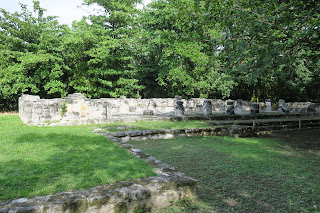An ancient city, eight centuries old, where explorers found an impressive
palace of the god Chaac, almost 50 burial sites and a great variety of
artefacts, some local and others imported from afar (made of obsidian, quartz,
ceramic, coral and conch shell), testifying to its commercial importance.
San Miguelito was the name of a copra ranch in operation from 1950-1970 in
this area.
|
San Miguelito.
The site is accessed by a pathway which starts from the lower hallway of
the Cancun Archeological Museum. San Miguelito consists of at least four
groups made up principally of structures which supported timber and palm
houses long ago. It is thought that large families lived there during
the final years before the arrival of the Spanish conquistadors.
-
The site’s most important complexes are presided over by palaces with
large interior spaces and vestibules with columns supporting flat
roofs, which were a novel architectural feature of buildings on the
east coast of Quintana Roo during the thirteenth and fourteenth
centuries. As they had open precincts, these buildings served a public
purpose. They were equipped with benches and they faced an altar at
which public ceremonies and celebrations were held.
-
The most important structure in San Miguelito is a base which was
remodeled at least three times during its pre-Hispanic occupation.
Upon this are preserved the remains of a temple which was once
decorated with a cornice and painted mainly in red and blue. The base
has a stairway with balustrades typical of the Postclassic period, and
judging by the direction the pyramid is facing, it would appear to be
related to the nearby site of El Rey.
-
The complex has managed to combine the original vegetation of San
Miguelito with the gardens of the Cancun Archeological Museum, and so
visitors can walk from one to the other, which is very pleasing.
|
See also
Source
Location






















